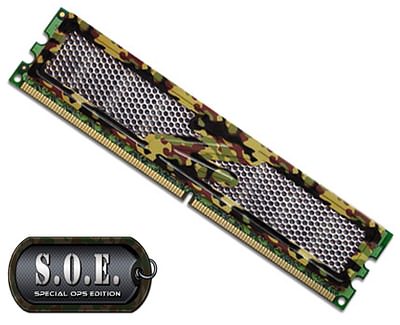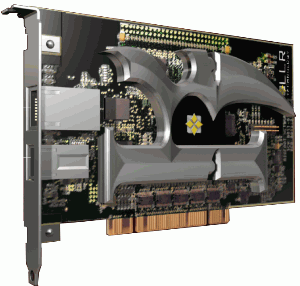 |
||
|
||
| ||
Paralyzed Man Moves Computer Cursor Through Thought OCZ Announces PC2-7200 Special Ops Edition Japanese Gadget Records, Replicates Odor Bigfoot Introduces Killer Network Interface Card Today Intel Officially Announces Core 2 Duo And Core 2 Extreme Paralyzed Man Moves Computer Cursor Through Thought A Paralyzed man using a new brain sensor has been able to move a computer cursor, open e-mail and control a robotic device simply by thinking about doing it, a team of scientists said on Wednesday. They believe the BrainGate sensor, which involves implanting electrodes in the brain, could offer new hope to people Paralyzed by injuries or illnesses. "This is the first step in an ongoing clinical trial of a device that is encouraging for its potential to help people with paralysis," Dr Leigh Hochberg, of Massachusetts General Hospital, said in an interview. The 25-year-old man who suffered paralysis of all four limbs three years earlier completed tasks such moving a cursor on a screen and controlling a robotic arm. He is the first of four patients with spinal cord injuries, muscular dystrophy, stroke or motor neurone disease testing the brain-to-movement system developed by Cyberkinetics Neurotechnology Systems Inc in Massachusetts. "This is the dawn of major neurotechnology where the ability to take signals out of the brain has taken a big step forward. We have the ability to put signals into the brain but getting signals out is a real challenge. I think this represents a landmark event," said Professor John Donoghue of Brown University in Rhode Island and the chief scientific officer of Cyberkinetics. The scientists implanted a tiny silicon chip with 100 electrodes into an area of the brain responsible for movement. The activity of the cells was recorded and sent to a computer which translated the commands and enabled the patient to move and control the external device. "This part of the brain, the motor cortex, which usually sends its signals down the spinal cord and out to the limbs to control movement, can still be used by this participant to control an external device, even after years had gone by since his spinal cord injury," added Hochberg, a co-author of the study published in the journal Nature. Although it is not the first time brain activity has been used to control a cursor, Stephen Scott of Queen's University in Ontario, Canada said it advances the technology. "This research suggests that implanted prosthetics are a viable approach for assisting severely impaired individuals to communicate and interact with the environment," he said in a commentary in the journal. In a separate study, researchers from Stanford University Schools of Medicine and Engineering described a faster way to process signals from the brain to control a computer or prosthetic device. "Our research is starting to show that, from a performance perspective, this type of prosthetic system is clinically viable," Stephen Ryu, an assistant professor of neurosurgery at Stanford, said in as statement. Source: Reuters
OCZ Announces PC2-7200 Special Ops Edition OCZ Technology Group announced the PC2-7200 DDR2 Special Ops Edition. The new DDR2-900 SOE is part of the limited edition Special Ops series which is a line of memory that caters to the needs of gamers and features a camouflage motif XTC heatspreader. The PC2-7200 SOE will be available in 1GB (2x512MB) and 2GB (2x1024MB) dual channel kits for the ultimate memory upgrade on the latest DDR2 platforms. Rated at 5-5-5 latency timings, these modules offer faster access times than standard JEDEC reference design and give gamers the additional performance edge over conventional DDR2-900 memory.  All Special Ops Edition modules are 100% hand-tested for quality assurance and compatibility and feature high quality XTC (Xtreme Thermal Convection) heatspreaders for the most effective heat dissipation. Specifications:
Source: OCZ Technology Group
Japanese Gadget Records, Replicates Odor People stopping to smell the roses can now take that sweet floral fragrance home with them or even send it to a faraway grandmother thanks to a new gadget in Japan that records and replicates the world's odors. The new device, developed by scientists at the Tokyo Institute of Technology, analyzes smells through 15 sensors, records the odor's recipe in digital format and then reproduces the scent by mixing 96 chemicals and vaporizing the result. Creator Takamichi Nakamoto says the technology will have applications in food and fragrance industries where companies want to replicate odors. But it could also be a boon for the digital world, allowing smells can be recorded in one place — by sensors in a mobile phone, for instance — and transmitted to appreciative noses halfway around the world. It could also aid online shoppers by letting people check out perfumes or flowers before they buy. "The sensitivity of the human nose is very good," Nakamoto said. "But to some extent we can replicate the performance." Nakamoto says his machine, in the works since 1999, is the most advance of its kind in the world, though a similar project is also underway at Keio University, also in Japan. But so far, the machine is too big to be portable — it measures about the 1 meter by 3 feet by 2 feet. Still, the breakthrough follows on the heels of a Japanese smellovision project that synchronized smells to movie scenes. That odorous endeveor was undertaken by NTT Communications Corp. and emitted smells from under seats in two movie theaters to accompany parts of the film "The New World," a Hollywood adventure film. Nakamoto's smell recorder has successfully recreated a range of fruit smells, including oranges, apples, bananas and lemons, but can be reprogrammed to produce almost any odor — from old fish to gasoline, he said. Making the 15 sensor chips, which pick up aromas and convert them to a digital formula, was the hardest part, Nakamoto added. But the unit's large size is also limitation because the 96 odor-forming chemicals are contained in separate glass bottles. A more compact version, which includes only the sensors, can record smells but must be hooked up to the blender to regenerate them. "We also want extend the range of smells, and then we can think about commercializing the system," Nakamoto said. Nakamoto's team of 12 scientists have been collaborating with a Japanese perfume company that produces the raw ingredients for fragrances and with electronics companies interested in the sensor chip technology. Source: Yahoo! News
Bigfoot Introduces Killer Network Interface Card Bigfoot Networks announced this interesting device - Killer Network Interface Card with Flexible Network Architecture (FNA) naturally called to help gamers squeeze maximum FPS of their games. The device features a built-in 400MHz Killer Network Processor Unit and 64MB of DDR PC2100 memory to offload Gigabit traffic handling from system to the NIC.  KillerNIC technologies:
Features:
Considering that every motherboard has a "free" NIC these days, the novelty has many rivals to compete with, however KillerNIC is a specificial product designed primarily for enthusiasts. KillerNIC is to go on sale on August 16 for the yet undisclosed price. Source: Killernic
Today Intel Officially Announces Core 2 Duo And Core 2 Extreme Today in the midnight (local time) Intel officially announced its Core 2 Duo and Core 2 Extreme desktop processors. We've written much of them already, so we'll just revise that information. The key differences of the new architecture from the "ideologically closest" Intel Core Duo (Yonah) are as follows:
The first Core 2 processors will be:
The most junior of the series, Core 2 Duo E4200 (1.60 GHz / FSB 800 / 2MB L2) is not yet to be announced. Speaking of sales delay on July 23 to 27, on July 23 online stores will start accepting orders, while Intel will officially launch sales on July 27. We recommend you read our preliminary reviews of Core 2 Duo E6400 and E6700 as well as Core 2 Duo E6600.
Write a comment below. No registration needed!
|
Platform · Video · Multimedia · Mobile · Other || About us & Privacy policy · Twitter · Facebook Copyright © Byrds Research & Publishing, Ltd., 1997–2011. All rights reserved. |